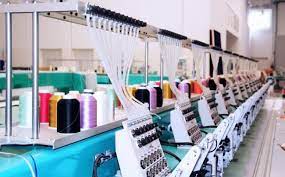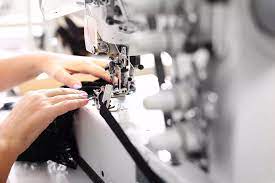Clothing manufacturing is a cornerstone of the fashion industry, transforming design concepts into wearable art through intricate processes and advanced technologies.
It involves multiple stages, from fabric selection to final quality checks, ensuring each garment meets high standards of quality and design.
As a leading clothing manufacturer, Modaknits excels in producing high-quality garments that cater to diverse consumer needs.
In this blog, we explore key aspects of clothing manufacturing through a series of questions and answers, providing detailed insights from a manufacturing perspective.
What are the key stages in the clothing manufacturing process?
The clothing manufacturing process involves several crucial stages, each playing a vital role in creating the final product:

- Design and Development:
- Process: Creating design concepts, sketches, and technical drawings.
- Importance: Ensures the garment meets both aesthetic and functional requirements, setting the foundation for production.
- Pattern Making:
- Process: Translating designs into patterns used to cut the fabric.
- Importance: Patterns serve as templates, ensuring consistency and accuracy in production, which is critical for mass production.
- Fabric Sourcing:
- Process: Selecting and procuring the appropriate fabrics and materials.
- Importance: The choice of fabric affects the garment’s quality, comfort, and durability, making it a crucial step in the process.
- Cutting:
- Process: Cutting the fabric according to the patterns.
- Importance: Precision in cutting is essential to minimize waste and ensure the pieces fit together correctly, impacting the overall quality of the garment.
- Sewing and Assembly:
- Process: Stitching the cut pieces together to form the garment.
- Importance: Skilled labor and advanced machinery ensure high-quality construction, which affects the durability and finish of the product.
- Finishing:
- Process: Adding final touches such as buttons, zippers, and labels.
- Importance: Enhances the garment’s functionality and aesthetic appeal, contributing to its market readiness.
- Quality Control:
- Process: Inspecting the finished garments for defects and ensuring they meet quality standards.
- Importance: Maintains consistency and upholds brand reputation by ensuring each garment meets the required specifications.
- Packaging and Distribution:
- Process: Packing the garments and preparing them for shipment.
- Importance: Ensures the garments arrive in perfect condition, ready for retail or direct to consumer delivery.
Each stage in the clothing manufacturing process is critical, and meticulous attention to detail at every step ensures the production of high-quality garments that meet consumer expectations.
How do manufacturers ensure the quality of clothing?
Ensuring the quality of clothing involves several key practices, each essential to producing high-quality garments:

- Material Selection:
- High-Quality Fabrics: Sourcing premium materials from trusted suppliers to guarantee fabric integrity and performance.
- Consistency: Ensuring fabric batches are consistent in color, texture, and quality to maintain uniformity across production.
- Skilled Labor:
- Training: Investing in training programs for workers to master the intricacies of garment construction.
- Attention to Detail: Emphasizing precision in stitching and assembly to ensure each garment meets high-quality standards.
- Advanced Machinery:
- Technology: Utilizing state-of-the-art equipment for cutting, sewing, and finishing to enhance accuracy and efficiency.
- Efficiency: Advanced machinery speeds up production processes while maintaining precise and consistent output.
- Quality Control Measures:
- Inspections: Conducting thorough inspections at each stage of production, from initial fabric checks to final garment assessments.
- Testing: Performing rigorous tests for durability, colorfastness, and fit to ensure the garments meet required specifications.
- Standards and Certifications:
- Compliance: Adhering to industry standards and obtaining relevant certifications to guarantee product safety and quality.
- Documentation: Keeping detailed records of quality control procedures to ensure traceability and accountability.
By integrating these practices, manufacturers like Modaknits ensure that each garment produced meets the highest standards of quality, durability, and customer satisfaction.
What materials are commonly used in clothing manufacturing?
The choice of materials significantly impacts the garment’s comfort, durability, and sustainability.

Here are some of the commonly used materials in clothing manufacturing:
- Cotton:
- Characteristics: Soft, breathable, and comfortable.
- Usage: Ideal for casual wear, t-shirts, undergarments, and everyday apparel due to its comfort and breathability.
- Polyester:
- Characteristics: Durable, wrinkle-resistant, and moisture-wicking.
- Usage: Suitable for sportswear, activewear, and outerwear, providing durability and performance benefits.
- Blends:
- Characteristics: Combines the benefits of different fibers, often including elastane for added stretch.
- Usage: Versatile for various types of garments, offering a balance of comfort, durability, and flexibility.
- Wool:
- Characteristics: Warm, resilient, and naturally insulating.
- Usage: Perfect for outerwear, winter clothing, and high-quality suits, providing warmth and comfort in colder climates.
Selecting the right material involves balancing factors such as cost, performance, and sustainability.
At Modaknits, our expertise ensures that each fabric is processed to enhance its natural qualities, resulting in high-quality garments tailored to meet specific needs.
How does sustainability impact clothing manufacturing?
Sustainability is increasingly important in clothing manufacturing, involving several key practices:

- Eco-Friendly Materials:
- Organic Cotton and Recycled Polyester: Using materials that reduce environmental impact and appeal to eco-conscious consumers. These materials help lower the carbon footprint and promote sustainable sourcing practices.
- Efficient Processes:
- Energy and Water Conservation: Implementing measures to reduce energy and water usage in production. This includes using energy-efficient machinery and water-saving technologies to minimize resource consumption.
- Waste Reduction:
- Recycling and Upcycling: Utilizing fabric scraps and repurposing materials to minimize waste. This practice helps reduce landfill waste and promotes a circular economy in the fashion industry.
- Ethical Labor Practices:
- Fair Wages and Safe Working Conditions: Ensuring the ethical treatment of workers by providing fair wages and maintaining safe working environments. This practice enhances worker well-being and supports social sustainability.
Incorporating sustainability presents challenges, such as higher costs and logistical complexities, but it also offers significant benefits, including improved brand image, customer loyalty, and a positive environmental impact.
At Modaknits, we are committed to integrating sustainable practices into our manufacturing processes to create high-quality, eco-friendly garments.
What technologies are used in modern clothing manufacturing?
Modern clothing manufacturing leverages advanced technologies to improve efficiency and quality.

Here are some of the key technologies used:
- CAD Software:
- Design and Pattern Making: Enables precise and efficient design creation and pattern development. CAD software helps streamline the design process, ensuring accuracy and reducing the time required for manual adjustments.
- Automated Cutting Machines:
- Precision and Speed: Ensures accurate fabric cutting with minimal waste. These machines optimize material usage and improve the consistency of the cut pieces, which is crucial for mass production.
- Sewing Robots:
- Consistency: Provides consistent stitching quality and reduces labor costs. Sewing robots enhance productivity by performing repetitive tasks with high precision, ensuring uniformity across all garments.
- 3D Printing:
- Prototyping: Enables rapid prototyping and customization of garment components. 3D printing allows manufacturers to create detailed prototypes quickly, facilitating design adjustments and reducing lead times.
- Sustainability Tech:
- Eco-Friendly Dyeing Processes: Reduces water and chemical usage in fabric dyeing. Sustainable dyeing technologies help minimize environmental impact by using less water and fewer harmful chemicals, promoting eco-friendly production practices.
These technologies enhance the manufacturing process, ensuring high-quality output and increased productivity.
At Modaknits, we integrate these advanced technologies to deliver superior garments that meet the evolving needs of our clients.
How do manufacturers handle customization and personalization?
Customization and personalization in clothing manufacturing involve several key steps to ensure that the final product meets the client’s specific requirements and expectations:

- Client Consultation:
- Understanding Needs: Discussing the client’s requirements, preferences, and vision for the custom garments.
- Design Proposals: Providing design options, recommendations, and expert guidance to help clients make informed decisions.
- Prototyping:
- Sample Creation: Developing prototypes based on the agreed design for client approval.
- Feedback Integration: Making necessary adjustments and refinements based on client feedback to ensure the design meets their expectations.
- Production:
- Bespoke Manufacturing: Tailoring production processes to accommodate custom designs, ensuring each piece is crafted to the client’s specifications.
- Quality Assurance: Implementing rigorous quality control measures to ensure that customized garments meet the same high standards as regular production.
- Logistics:
- Timely Delivery: Coordinating production schedules and logistics to meet delivery deadlines, ensuring that clients receive their custom garments on time.
Offering customization requires flexibility and precision, but it significantly enhances client satisfaction and brand loyalty.
At Modaknits, we are committed to providing personalized manufacturing services that meet the unique needs of our clients, delivering high-quality custom garments that stand out in the market.
What are the latest trends in clothing manufacturing?
Current trends influencing clothing manufacturing include several key areas:

- Sustainability:
- Eco-Friendly Materials: There is an increasing use of sustainable fabrics such as organic cotton and recycled polyester, which reduce environmental impact.
- Circular Fashion: Emphasizing recycling and upcycling to minimize waste and promote a more sustainable lifecycle for garments.
- Technological Advancements:
- Automation: Greater use of robotics and AI in production enhances efficiency, accuracy, and speed, reducing the reliance on manual labor.
- Digital Fashion: Incorporating virtual design and try-on technologies, which streamline the design process and improve the customer shopping experience.
- Customization:
- Personalized Products: There is a growing demand for custom-fit and personalized garments that cater to individual preferences and body types.
- On-Demand Production: Reducing inventory waste by producing garments based on actual demand rather than forecasting, which also allows for more flexibility and reduced storage costs.
- Ethical Practices:
- Transparency: Increased focus on supply chain transparency and ethical labor practices to ensure fair treatment of workers and responsible sourcing of materials.
- Consumer Awareness: Educating consumers about sustainable and ethical fashion choices, empowering them to make informed decisions.
Adapting to these trends allows manufacturers to stay competitive and meet evolving consumer expectations.
At Modaknits, we embrace these trends to enhance our manufacturing processes, ensure sustainability, and provide high-quality garments that align with modern values and demands.
Conclusion
Clothing manufacturing is a complex and dynamic field that blends creativity, advanced technology, and meticulous craftsmanship to transform design concepts into high-quality garments.
At Modaknits, we are committed to producing garments that meet the diverse needs of our clients, whether through sustainable practices, cutting-edge technologies, or personalized customizations.
We invite brands, designers, and retailers to explore our comprehensive manufacturing services and collaborate with us to create exceptional clothing that resonates with the market and aligns with evolving consumer demands.













